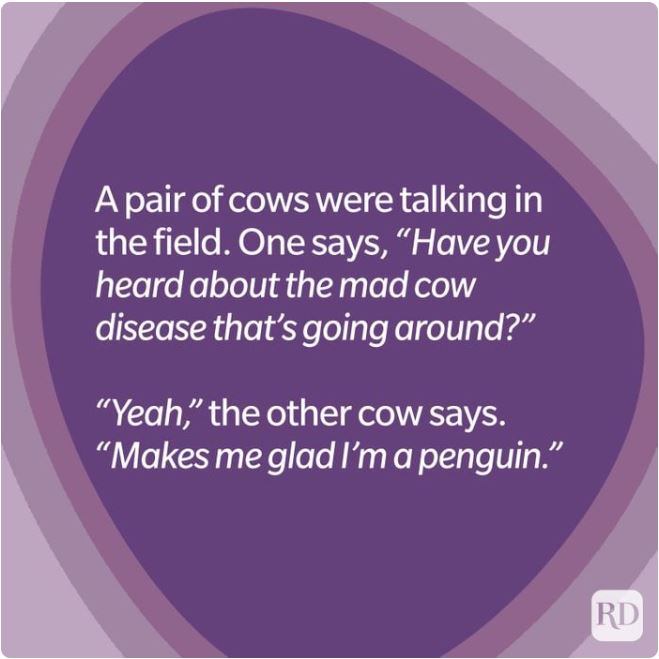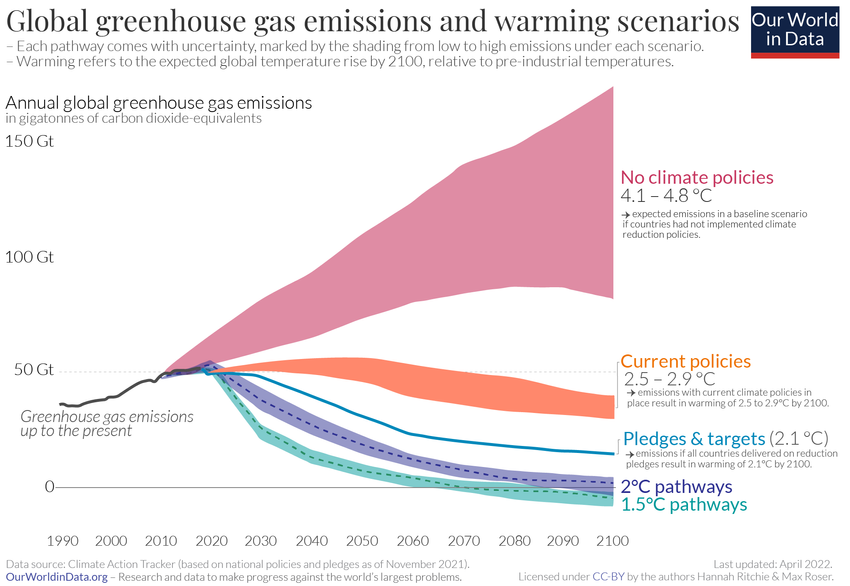
Châtenay-Malabry (FR - 92290), December 11, 2023
EFITA newsletter / 1084 - European Federation for Information Technology
in Agriculture, Food and the Environment
The informatique-agricole.org site offers you the possibility of subscribing
the RSS feeds of its two newsletters
See RSS feeds
to implement to ensure that you continue to receive this newsletter
To unsubscribe
this newsletter, please contact me directely: guy.waksman(a)laposte.net
if this
link Unsubscribe does not work.

To correspond with me (GW), please use this address: guy.waksman(a)laposte.net
To subscribe the efita newsletter (please ask your friends and colleagues
to test this link)
Efita
Newsletters subscription
Before computers: Bringing in hay to the farm in 1952
|
|
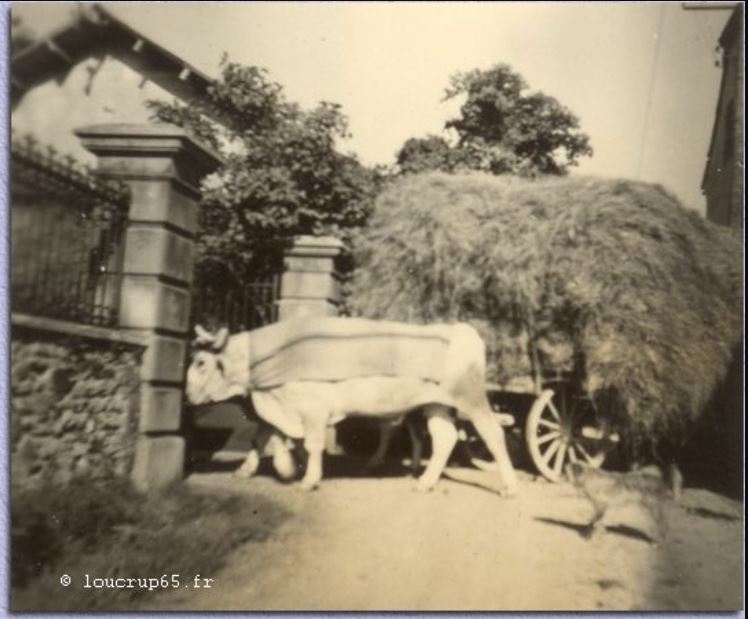 |
|
"Katastrophe!" Since I changed my email address, I am not
receiving the EFITA Newsletters… Ian Housemann alias “Casa Hombre”
Please could you register me on your contacts list - my new email address
is ian.houseman(a)btinternet.com
El primo de mi tía: Gerardo Budowski (I owe to Gerardo my interest
in farming, forestry and agriculture)
Ver
researchgate.net
2024 Tech Hub LIVE: Call for Speakers Now OPEN!
The 2024 Tech Hub LIVE Conference & Expo will take place July 29-31
in Des Moines, Iowa.
Deadline to Submit: January 12, 2024
We are now accepting presentation proposals for the 2024 Tech Hub LIVE
Conference & Expo taking place July 29-31 in Des Moines, Iowa.
The Tech Hub LIVE Conference & Expo is the premier event convening
the ag tech and ag retail communities to connect, engage, and share insights
and experiences with the latest innovations to deploy data-driven, tech-enabled
agriculture solutions. The 2024 Tech Hub LIVE Conference & Expo will
provide an unparalleled experience for both delegates, commercial clients,
and allied constituents.
Prospective speakers are encouraged to submit detailed proposals including:
the session format – whether a slide presentation, a panel discussion,
a pre-conference workshop, a facilitated small group discussion, or other
proposed format; session specifics – the title, description, and intended
attendee takeaways or an articulation of the actionability of the session;
as well as speaker specifics – including contact information, a professional
biography, and a headshot.
Topics of interest include, but are not limited to:
- Optimizing on-farm efficiency
- Ag data standardization and data security
- Drone and autonomous equipment’s relationship with profitability
- AI models’ impact on Ag
- Digital strategy – implementation case studies
- Evaluating risk versus reward for insuring and financing new technologies
- Streamlining your ag tech department
- Catalyzing the NextGen of Ag – solutions for gaps
- Innovation in application equipment, operator efficiency, scouting,
remote sensing
- Soil health and climate smart agriculture
- Geospatial data
- Improving retailer, agronomist, and grower communications for better
ROI for all
- Equipment dealer and ag retailer collaborations to better serve the
grower
- What other global regions’ ag tech practices can teach us
- What other industries’ tech practices can teach ag
The program committee will give priority to submissions featuring retailer
and/or producer speakers. Sessions and panels featuring clear elements
for audience engagement and participation are strongly encouraged. Please
note that suppliers selected to present at Tech Hub LIVE will be required
to support the event by exhibiting.
See techhublive.com
Weekly newsletters about ICT in Agriculture in English and French
Both newsletters have around 5000 subscribers.
>>> Last weekly EFITA Newsletters in English (created in 1999)
Efita
Newsletters
>>> Last weekly AFIA Newsletters in French (created more than
20 years ago in 1997) Afia
Newsletters
>>> Statistics
for the latest efita newsletter
>>> Latest
issue of the afia newsletter
>>> Latest
available satistics for the afia newsletter
FutureFarming.com
> Hoes and harrows at Agritechnica 2023
Hoes and Harrows at Agritechnica Increasingly, machinery manufacturers
are focusing on the market for mechanical weed control.
> Spraying technology: Kubota’s AI precision spraying system wins bronze
award at Sitevi trade fair
The Japanese machinery manufacturer Kubota has won the bronze medal at
the Sitevi trade fair.
> Weed control: A selection of start-ups with precision weeders
Artificial intelligence forms the foundation of an increasing number of
precision weeders, whether chemical or not.
> Climate change: New strategies needed to help farmers recover from
climate shocks
Smallholder farmers in the tropics are particularly vulnerable to extreme
weather impacts from climate change.
> AI overlays in compressed video streams
IDS NXT malibu combines consumer technology from Ambarella - known from
action cams - with industrial quality from IDS. The result is a new class
of intelligent industrial cameras that generate AI overlays in the video
live stream as edge devices. This opens up new possibilities for smart
farming.
> Drones: Fast growing Chinese Huida Tech moves into Vietnam and Mexico
Chinese company Huida Tech has partnered with dealers in Mexico and Vietnam
to deploy its HD540Pro agricultural drone in both countries.
> Electric tractors: Start-ups also focus on electric tractors
Electric propulsion and autonomous vehicles have caught the attention
of many companies, including start-ups.
> Field robots: Agricultural robotics take centre stage at Agritechnica
In a span of four years since the last Agritechnica in 2019, where robots
were a novelty, the 2023 edition witnessed a remarkable shift.
> Field robots: The new TRAXX vineyard robot: a surprising first feedback
+ Video
Wine grower Stéphane Dubreuil shares his experience after the first 100
hours with his TRAXX robot.
> Tools & data: Bayer collaboration with Microsoft connects farm
data
Bayer announced an update on the strategic collaboration with Microsoft.
> Ag-Robot Buying Guide 2024 is out now, 60 field and harvest robots
to choose from
For the fourth consecutive year, Future Farming magazine has compiled
the most comprehensive overview of field and harvest robots for outdoor
crop production.
> Partner feature: Digital services – McCormick has them all
A partnership with Agrirouter, the multi-format data exchange Cloud platform,
has opened the door to wider-ranging digital services and solutions for
McCormick users. Could we have imagined this 20 or even 10 years ago?
> Weed control: Tensorfield eradicates weeds using heated vegetable
oil
US startup Tensorfield Agriculture is pioneering the commercial adoption
of thermal micro dosing for weed control in vegetable crops with its machine
Jetty.
> Fertilizer technology: Giga Fertilizer Spreader Horsch Leeb Xeric
14FS
The German machinery manufacturer Horsch introduced a pneumatic fertilizer
spreader with a working width of 48 meters and a hopper capacity of 14
cubic meters.
> Digital farming: Farmtopia – European project paving the way for
Digital Farming accessible to all
Farmtopia, a Horizon Europe project running from September 2023 to August
2026, aims to democratise digital farming, focusing on small-scale farmers.
> Autonomy: AGCO’s vision for autonomy accelerates with FarmFacts acquisition
AGCO is taking next steps with the acquisition of FarmFacts' German data
platform and the launch of AGCO Ventures.
> Weed control: MoonDino has wheels that also act as weeding tools
The ArvaTec MoonDino is able to autonomously carry out weeding and padding
operations in rice fields.
> Vision + Robotics: WUR Agro Food Robotics embarks as Vision + Robotics
The Agro Food Robotics programme at Dutch Wageningen University Research
(WUR) has officially rebranded itself as 'Vision + Robotics.'
> Field robots: Microspraying with UK’s SRC Tomv4 hits the target
Small Robot Company develop a robot system for monitoring, analysing and
treating weeds, pests and diseases in maize and wheat crops.
> Unmanned tractors: ‘Machinery manufacturer must prepare for unmanned
tractors’
Dutch arable farmer Gert Sterenborg in the north of the Netherlands has
tested an unmanned autonomous Steyr tractor.
> Hydrogen+electricity: Indian Tafe presents tractors powered by hydrogen
and electricity
The Indian tractor manufacturer Tafe displays two innovations at Agritechnica:
an electric tractor and a hydrogen-powered tractor.
> Connectivity: Jacto steps forward to delivery connectivity to Brazilian
farmers
Connectivity is a huge obstacle for Brazilian farms to climb the level
of digital agriculture.
> Chinese tractors: Green and white Chinese Lovol tractors now with
CVT at Agritechnica
At Agritechnica there are again green and white tractors from China. The
name Arbos is no longer on the hood, but now it's Lovol.
> Electric tractors: Test drive with the electric narrow-track tractor
Fendt e107V
It's four years later than originally planned, but next year Fendt will
finally start (limited) production of an electric narrow-track tractor.
> Spraying technology: Bayer is also working on a carried spot sprayer
The German company Bayer Crop Science took the opportunity at the Agritechnica
trade fair to showcase a prototype of its spot sprayer.
> Innovations DLG: DLG Agrifuture Concept Winner 2023 unveils promising
innovations for farmers
The DLG (German Agricultural Society) has announced the winners of the
prestigious DLG-Agrifuture Concept Winner award.
> Working with an unmanned autonomous tractor? Bulb grower is cautiously
optimistic
Dutch bulb grower Sjaak Huetink is interested in automation and autonomy.
He tested an autonomous Steyr Expert 4130 CVT for two days on his fields.
> Autonomous vehicles: U.S. sugar beet farmers pioneer autonomous transport
from field to factory
The cooperative collaborated with Florida-based military company Kratos
Defense to implement the innovative slave-follower system in their existing
fleet of trucks.
> Indoor Farming: New possibilities for vertical farming with high-wire
crops
Natural Resources Institute Finland (Luke) patented vertical farming solution
enables the production of high-wire crops in vertical farming.
> Connectivity: Trimble introduces automatic stream switching for corrections
Trimble announced stream switching - a new feature allowing farmers to
seamlessly stream Trimble CenterPoint® RTX, RangePoint® RTX and ViewPoint
RTX®, over IP or satellite.
> Safety issues : How safe are autonomous agricultural machines?
Protecting people plays a crucial role in self-driving machines. With
his doctorate Dr. Christian Meltebrink paved the way for their use in
the field and on the farm.
> Yield: Higher crop yields possible thanks to disease-resistant fungi
Spreading fungi that cooperate with plants in soil over infected farmland
can save or even increase crop yields.
> Field robots: Alberta’s Olds College builds Pan-Canadian Smart Farm
Network
Olds College in Alberta, Canada, has launched a cross-country Smart Farm
network designed to trial and develop agriculture technologies.
> Drones: Agritechnica launch pad for new drones
At Agritechnica the market leading Chinese drone makers faced new challengers
designed and built in European countries.
> AGRI-PV: BayWa
fusing solar power and agriculture in 5 countries with EU funding
BayWa r.e. has secured €6.5 million in which will be used to develop six
projects across five countries by 2027, combining agriculture with solar
power generation.
https://sp-ao.shortpixel.ai/client/to_webp,q_glossy,ret_img,w_1080/https://www.futurefarming.com/app/uploads/2023/12/IMG_BayWar.e._Harvester.jpg
> Ag-Robot Buying Guide 2024 is out now, 60 field and harvest robots
to choose from
For the fourth consecutive year, Future Farming magazine has compiled
the most comprehensive overview of field and harvest robots for outdoor
crop production.
> Partner feature: Digital services – McCormick has them all
A partnership with Agrirouter, the multi-format data exchange Cloud platform,
has opened the door to wider-ranging digital services and solutions for
McCormick users. Could we have imagined this 20 or even 10 years ago?
> Weed control: Tensorfield eradicates weeds using heated vegetable
oil
US startup Tensorfield Agriculture is pioneering the commercial adoption
of thermal micro dosing for weed control in vegetable crops with its machine
Jetty.
> Fertilizer technology: Giga Fertilizer Spreader Horsch Leeb Xeric
14FS
The German machinery manufacturer Horsch introduced a pneumatic fertilizer
spreader with a working width of 48 meters and a hopper capacity of 14
cubic meters.
> Digital Farming: Farmtopia – European project paving the way for
Digital Farming accessible to all
Farmtopia, a Horizon Europe project running from September 2023 to August
2026, aims to democratise digital farming, focusing on small-scale farmers.
> Autonomy: AGCO’s vision for autonomy accelerates with FarmFacts acquisition
AGCO is taking next steps with the acquisition of FarmFacts' German data
platform and the launch of AGCO Ventures.
> Weed control: MoonDino has wheels that also act as weeding tools
The ArvaTec MoonDino is able to autonomously carry out weeding and padding
operations in rice fields.
> Vision + Robotics: WUR Agro Food Robotics embarks as Vision + Robotics
The Agro Food Robotics programme at Dutch Wageningen University Research
(WUR) has officially rebranded itself as 'Vision + Robotics.'
See futurefarming.com
Lunch at a Farm in Karlshaven near Delden, 1885 / Mittagessen auf einem
Bauernhof in Karlshaven bei Delden, 1885, by Isaac Israels (NL, 1865,
1934)
|
01
- 11/12/2023
|
 |
|
Préparation du repas dans la cuisine de Ker Loÿs, par Georges Boisselier
(1876-1943)
|
02
- 11/12/2023
|
 |
|
globalagtechinitiative.com
> From Robot Tractors to Tomato Imaging: What Are the Use Cases of
ML and AI in Agriculture?
Contributor Arjun Chandar dives deep into some of the most important AI
and ML (Machine Learning) applications in ag, and some future possibilities.
> Verge, GRDC Form Partnership to Accelerate Transition to Autonomous
Farming
At the heart of this partnership is an innovative on-farm operations optimization
project, led by Verge Technologies Australia Pty Ltd.
> Intelinair Revolutionizes Crop Intelligence: A Game-Changer in AgTech
Intelinair is reshaping the future of agriculture through its cutting-edge
technology. By providing real-time and actionable insights into crop health,
nutrient levels, and growth patterns, Intelinair is empowering farmers
to make informed decisions and optimize their yields like never before.
> Report: AI and Analytics to Boost Efficiency in Indian Agriculture
A new study underscores the transformative potential of AI and analytics
in contributing to overall efficiency in the agricultural sector.
> Bayer Collaboration with Microsoft Connects Farm Data to Address
Lack of Data Interoperability
New connectors allow secure, compliant data exchange, enabling farmers
to make better use of agricultural data
> Corteva Agriscience: Laser Focused on Innovation and Sustainability
Corteva Agriscience leverages data and technology to help farmers produce
more with less.
> What's Shaping Ag Equipment Trends in Key Global Markets?
Agrievolution leaders highlighted important equipment trends shaping the
future of agriculture at Agritechnica.
> AquaSpy: Maximizing Yield, Minimizing Costs in AgTech
Dive into the world of AquaSpy, where technology meets agriculture to
optimize water usage and increase yields.
> How NVIDIA Is Bringing AI to Agriculture
Accelerated computing company NVIDIA identifies farming’s biggest issues
and develops the right technologies to help solve them.
> eAgronom Launches Trials With Farmers Across Europe to Merge Profitability
and Sustainability Efforts
Trials led by the agritech startup will begin in Estonia, Lithuania, Poland,
and Spain, and will expand into Latvia, Czechia, and Romania in 2024.
> AquaSpy: Maximizing Yield, Minimizing Costs in AgTech
Dive into the world of AquaSpy, where technology meets agriculture to
optimize water usage and increase yields. With innovative soil moisture
monitoring and data-driven insights, farmers can achieve maximum results
while minimizing input expenses. AquaSpy is reshaping the future of irrigation.
> Topcon Positioning Systems Announces New Global Sustainability Initiatives
As VP of Global Sustainability and CSR, Michael Gomes will lead a team
dedicated to sustainability for all markets and product lines.
> Keeping Grain Fresh With Proper Temperature and Moisture Control
With careful temperature and humidity control, farmers can store their
grain for years without it succumbing to serious issues.
> From Robot Tractors to Tomato Imaging: What Are the Use Cases of
ML and AI in Agriculture?
Contributor Arjun Chandar dives deep into some of the most important AI
and ML applications in ag, and some future possibilities.
> Verge, GRDC Form Partnership to Accelerate Transition to Autonomous
Farming
At the heart of this partnership is an innovative on-farm operations optimization
project, led by Verge Technologies Australia Pty Ltd.
See globalagtechinitiative.com
Trimble Addresses Rural Connectivity with Automatic Stream Switching
for Corrections
Trimble has announced stream switching — a new feature allowing farmers
to seamlessly stream Trimble CenterPoint RTX, RangePoint RTX, and ViewPoint
RTX, over IP or satellite. Available for farmers using a NAV-900 or NAV-500
receiver, this new feature delivers less down time and performance comparable
to RTK without the complexity of base stations.
Given the importance of uptime in farming operations, this solution was
designed to provide farmers with the optimal GNSS corrections stream,
delivered via IP or satellite, depending on signal strength. In areas
prone to satellite cutoffs due to elevation changes or canopy, the signal
switches to the modem and stays on IP. For regions with bad cellular connection,
the streaming automatically switches to satellite. Through this seamless
stream switch, farmers gain improved guidance uptime, taking from the
best of both worlds and boosting productivity through RTK level corrections
— without any additional software or mindspace.
.../...
See
globalagtechinitiative.com
Intelinair Partners with Hubner Industries to Develop Digital Platform
to Manage Seed Corn Production
Intelinair and Hubner Industries, LLC have announced a strategic multi-year
collaboration agreement to create a new innovative digital platform specifically
to manage hybrid seed corn production. Under the terms of the agreement,
Intelinair will use its high-resolution imagery and data analytics to
help growers more efficiently identify issues in the field throughout
the season and inform real-time seed production management decisions to
protect yield potential.
“We are excited to partner with Doug Hubner and his team at Hubner Industries,
a family-owned business that has been in the seed production, treatment,
packaging, and distribution industry for more than 50 years,” said Tim
Hassinger, CEO & President at Intelinair. “Through this new platform,
we will be able to address the specific needs of seed production using
our technology.”
.../...
See
globalagtechinitiative.com
Le ravaudeur de filets à Penmarc’h, par Georges Boisselier (1876-1943)
|
03
- 11/12/2023
|
 |
|
La bonne de Ker Loÿs, par Georges Boisselier (1876-1943)
|
04
- 11/12/2023
|
 |
|
agfundersnews.com
Data snapshot: Farmtech funding continues its upward climb in Southeast
Asia ‘irrespective of the external financial climate’, by Jennifer Marston,
November 29, 2023
Historically, Southeast Asia (SEA) smallholder farmers have grappled with
unreliable access to inputs and supplies, barriers around finance and
a fragmented, often opaque supply chain. This is despite the vital role
these smallholders play in SEA’s economy, producing everything from commodities
like wheat and maize to rubber, coffee and palm oil.
In the face of the climate crisis, however, this is beginning to change.
SEA is recognized as one of the world’s most vulnerable regions to climate
change; in agriculture, this has led to calls for more sustainable farming
solutions that are easily accessible by smallholder farmers.
SEA has never been a hotbed of VC innovation when it comes to farmtech.
Recent numbers suggest that, too, is changing. AgFunder’s Asia-Pacific
AgriFoodTech Investment report 2023 recently found that, although overall
funding to the region was down in 2022, more VC dollars went towards upstream
startups working close to the farm.
Farmtech deals in SEA totaled $481 million in 2022, with robotics, ag
marketplaces and novel farming systems raking in the most cash.
.../...
See
agfundernews.com
Rainstick harnesses electrical fields to grow crops ‘bigger, faster,
and more sustainably’, by Elaine Watson, November 29, 2023
We’ve known for years that electrical storms can boost crop yields, says
Rainstick cofounder Mic Black. “But try putting lightning in a box.”
And that, in a nutshell, is what Rainstick is doing: deploying super-high
voltage electrical fields to increase seed germination rates in everything
from wheat to leafy greens. Its tech can also boost growth rates in mushrooms,
yeast, and other microorganisms, says Black. “We create electric fields
to grow crops bigger, faster, and more sustainably.”
Rainstick’s device “looks a bit like a big photocopier with a bunch of
treatment chambers that creates electric fields with extreme precision,”
explains Black, who cofounded the company with Darryl Lyons in early 2022.
“And because it’s so targeted, it’s also very energy efficient.”
“The simplest description of what we do is trying to mimic the natural
effects of lightning in a controlled environment,” he says. “Why lightning?
Because there are tiny biological switches inside plants that are sensitive
to electric fields, which influence how the plants grow and adapt to their
environment.”
But is electroculture—a term used to describe using electricity to stimulate
plant growth— legit?
It depends how you’re doing it, says Black. A literature search on electroculture,
for example, will yield “about 200 high-quality papers and maybe 2,000
that aren’t so great,” while a Google search will throw up everything
from folklore around lightning sticks and thunderstorms to blogs from
home gardeners that don’t really know what they’re doing, observes Black.
“There’s a big difference between the precision of what we’re doing and
what you see on Tik Tok with people putting copper coils in the ground
and doing incantations.”
A year ago, says Black, “We probably still sounded like crazies. But now
people are at least becoming more familiar with the fact that electric
fields influence biology.”
Which if you think about it, should not really come as a surprise, he
says. “Every neuron that’s firing in your head right now is controlled
by an electric field.”
…/…
See
agfundernews.com
Q&A: John Deere’s Heraud looks back on 10 years of leading ag innovation
— and what to expect in the next decade, by Jennifer Marston
One could hardly discuss the last decade in agtech advancements without
mentioning John Deere — a company that’s been innovating since its namesake
founder created a self-scouring steel plow back in 1837.
Deere’s original idea solved the issue of prairie soil sticking to plow
blades and hindering farmer productivity. In the digital age, the problem
sounds almost quaint. But that spirit of improving tools for farmers is
the same one that’s led to the precision agriculture tools and fully autonomous
tractors of more recent years.
The last decade in agtech has been especially active, with more farmers
going digital and the number of startups iterating on inputs, equipment
and software proliferating. To find out where and how John Deere (the
company) views itself in this age of endless technology options, I recently
spoke with Jorge Heraud, the company’s VP of automation and autonomy.
Heraud moved over to the tractor giant when it acquired his startup Blue
River Technologies for $305 million in 2017, one of agtech’s most successful
exits to-date.
>>>> AgFunderNews: What have been Deere’s most important developments
over the last decade?
JH: Some of the most important developments within John Deere could be
categorized in three areas.
>> The first category is our machine journey. Two examples are ExactEmerge
planter technology and X9 combines. The ExactEmerge technology is designed
to put seed into the ground at speed with pinpoint population and spacing
accuracy. This technology has resulted in up to a 9% increase in grain
yields, showcasing the direct benefits of sustainable practices. Leveraging
the data collected using this technology, farmers can gain new insights
and make better decisions year after year to grow more with less.
The X9 combine allows farmers to be more productive. The machine can harvest
up to 30 acres an hour in wheat and up to 7,200 bushels an hour in high
yielding corn. The technology on the combine can sense varying crop conditions
and automatically adjusts the machines ground speed to maintain a consistent
crop load. This helps farmers get more out of the machine’s capacity and
improve grain quality.
>> The second area is our automation journey. See & Spray technology
is a game-changer in our Leap Ambition journey, helping farmers reduce
their non-residual herbicide use by more than two thirds and maintain
a hit rate comparable to traditional spraying. This technology uses our
integrated tech stack, letting farmers manage their production at the
plant level. The result is fewer chemicals applied to places where they’re
not necessary, in this case the soil, which can create an overall positive
outcome for the farmer’s economics as well as the health of the soil,
waterways, and biodiversity.
Another example in the automation journey is our Combine Advisor package
on combines. Combine Advisor automatically adjusts the combine’s harvest
settings to put higher quality grain in the tank and reduce the chance
of grain loss. Cameras on the clean grain and tailings elevator help them
make informed decisions on the crop that is flowing up and into the grain
tank.
>> The third category is our digital journey. As these advanced
machines pass through the field, vital sensor readings are being gathered
in the John Deere Operations Center, enabling easy documentation and traceability
of field practices, so farmers and their trusted advisors can easily evaluate
productivity and agronomic outcomes.
.../...
See
agfundernews.com
With a fresh $25m in hand, AgroSpheres aims to build ‘unprecedented
stability’ in crop biologicals, by Jennifer Marston, December 4, 2023
While generally seen as safer for planetary health, biopesticides are
frequently less effective than their synthetic counterparts, with success
rates varying wildly. It’s one reason many growers remain hesitant to
adopt this class of crop protection products.
US biotech startup AgroSpheres is addressing this with a novel delivery
system that encapsulates and delivers pesticides to plants in a more targeted
approach than traditional methods. This has the potential to reduce pesticide
use and avoid the damage to biodiversity that often happens with conventional
crop protection.
“Our technology allows for manufacturing, encapsulation and delivery of
that biological pesticide all in one platform,” AgroSpheres cofounder
and CEO Payam Pourtaheri tells AgFunderNews.
“I don’t think there are any other technologies out there that are working
on biologicals in this form with an emphasis on manufacturing and delivery.
They’re focused on maybe microbes as the active ingredient or they isolate
one component such as a peptide and then figure out its optimal formulation
for field delivery later.”
He believes Agrospheres’ differentiator is “a fully vertically integrated
platform where you can go from our proprietary strain to the finished,
encapsulated product. And the encapsulation provides great stability during
production, purification and shelf life — unprecedented stability for
a biological material.”
Charlottesville, Virginia-based AgroSpheres just completed a $25 million
Series B round after “a strategic investment” from agricultural sciences
company FMC Corporation.
Lewis and Clark AgriFood, Ospraie Ag Science, BIDRA Ventures, and Cavallo
Ventures also participated in the round.
.../...
See
agfundernews.com
| |
The
Efita newsletter is sponsored by:

|
A celebrated startup promised Kentuckians green jobs. It gave them a
‘grueling hell on earth.’
The inside story of how AppHarvest's indoor farming scheme imploded — and
took its blue-collar workforce down with it.
Bayer is a silent yet staple cog in the broader healthcare landscape. The
pharmaceutical giant produces items that impact billions of people on a
daily basis, including medications such as Aspirin and Aleve, to agricultural
products and insecticides. The company was founded in the early 1800’s,
and has had incredible growth and impact since then; to keep up this momentum,
it has invested significant resources in not only continuing to extend its
line of time-tested products, but has also committed to becoming an innovation
powerhouse.
While traditional medications are a large part of its business, Bayer has
also made strides in agriculture and crop science products. Recent reports
indicate that Bayer’s work in this sector has grown significantly over the
last few decades, now worth more than 25.2 billion euros, and far more in
potential market cap. This is primarily due to the company’s breadth of
efforts and research across a variety of fields in this sector, ranging
from crop fertility and regenerative agricultural practices, to biofuels
and carbon farming.
These efforts are of vital importance; the World Food Program reports that
nearly 345 million people are facing acute food insecurity in 2023 alone—a
number that is expected to skyrocket over the next decade. Specifically,
as access to stable diets and nutrition has become intertwined with trade,
volatility in geopolitics across the globe has elevated food security concerns.
Alvaro Lario, President of the International Fund for Agricultural Development,
explains that resolving food security requires “investments and political
will to implement solutions at scale… Investments in small-scale farmers
and in their adaptation to climate change, access to inputs and technologies,
and access to finance to set up small agribusinesses can make a difference.”
Companies like Bayer that are actively working on innovation in these sectors
may be able to help alleviate some of these burdens.
.../...
See
grist.org
Q&A with CEO of Verdant Robotics, Gabe Sibley: Verdant Robotics seeks
to expand its precision solutions to more crops, by Alex Gray
Gabe Sibley, the CEO and cofounder of Verdant Robotics, is looking to make
an immediate impact on the world through his work.
In 2018, Sibley and Curtis Garner launched Verdant Robotics, a Silicon Valley
company developing precision spraying solutions. It brings an array of technologies
together to apply inputs down to the millimeter level. This system uses
multiple-view geometry, hyperspectral imaging, inertial sensors, light detection
and ranging (lidar), kinematic sensors, and GPS when available.
Verdant’s service is currently available only for specialty row crop operations,
but the company is running trials for corn and soybean applications in the
Midwest, and units are available for purchase now.
…/…
See
agriculture.com
Bigoudènes dans la salle de la villa Ker Loÿs, par Georges Boisselier
(1876-1943)
|
05
- 11/12/2023
|
 |
|
A man carrying faggots, by George Chinnery (1700 – 1799)
|
06
- 11/12/2023
|
 |
|
Dr. Pamela Ronald: Leading the way in sustainable agriculture / AGDAILY,
By Michelle Miller, Farm Babe, November 07, 2023
.../...
One serious threat to rice crops is rice blight, caused by the bacteria
Xanthomonas oryzae pv. oryzae, commonly known as Xoo. It’s a devastating,
fast-spreading pathogen that can destroy up to 75 percent of a crop that
primarily impacts farmers in Asia, the western coast of Africa, Australia,
Latin America, and the Caribbean.
Fortunately, Ronald became famous in the 1990s when she found a gene called
Xa21 in rice. This gene helps rice plants be more tolerant to flooding
and fight off certain diseases, which is a groundbreaking discovery for
farming. It means farmers can use fewer potentially harmful chemicals
and get better rice crops. Her research facilitated the development of
high yielding Sub1 rice varieties grown by more than 6 million subsistence
farmers in India and Bangladesh. This work has resulted in a 60 percent
yield increase on average.
To quote her from her TED talk: “It wasn’t until the 1990s that scientists
finally uncovered the genetic basis of resistance.”
.../...
One serious threat to rice crops is rice blight, caused by the bacteria
Xanthomonas oryzae pv. oryzae, commonly known as Xoo. It’s a devastating,
fast-spreading pathogen that can destroy up to 75 percent of a crop that
primarily impacts farmers in Asia, the western coast of Africa, Australia,
Latin America, and the Caribbean.
Fortunately, Ronald became famous in the 1990s when she found a gene called
Xa21 in rice. This gene helps rice plants be more tolerant to flooding
and fight off certain diseases, which is a groundbreaking discovery for
farming. It means farmers can use fewer potentially harmful chemicals
and get better rice crops. Her research facilitated the development of
high yielding Sub1 rice varieties grown by more than 6 million subsistence
farmers in India and Bangladesh. This work has resulted in a 60 percent
yield increase on average.
To quote her from her TED talk: “It wasn’t until the 1990s that scientists
finally uncovered the genetic basis of resistance.”
See
agdaily.com
State Legislators' Pestilential Pesticide Regulation / American Council
on Science and Health
Politicians are attacking a safe and important class of pesticides – neonicotinoids
– with unwarranted bans and restrictions. These policies will be devastating
to farmers, costly to consumers, and damaging to the environment.
.../...
See
acsh.org
How weather apps are trying to be more accurate
Travelling the world by bicycle for two years might be too physically
challenging for most of us, but Zoe Ashbridge has found a way to make
the pedalling a little bit easier.
She and her partner and travelling companion Stewart use an app called
Windy to track the direction of the wind.
"We use it daily," says Zoe, a 33-year-old from Shropshire.
"It saves us wasting time and energy.
"Our bikes weigh around 30 to 40kg, and if we're going against the
wind, we can get sore knees. It prevents all that. Why spend two hours
cycling when the next day it would take 30 minutes?"
.../...
See bbc.com
Dubai's Food Tech Valley to host a 'GigaFarm' to recycle 50,000t of
food waste, by Manoj Nair, Business Editor, December 06, 2023
Food Tech Valley to start construction on GigaFarm to recycle 50,000t
of food waste
See
gulfnews.com
Le fendeur de bois, 1855, par JF Millet, 1814-1875, musée du Louvre
|
07
- 11/12/2023
|
 |
|
Le départ pour le travail, 1851-1853, par JF Millet,
1814-1875
|
08
- 11/12/2023
|
 |
|
As Sustainability Work Accelerates, ADM Issues First Annual Report
on Regenerative Agriculture, by ADM, December 2, 2023
ADM, a global leader in sustainable agriculture supply chains, today issued
its inaugural annual Regenerative Agriculture Report. The report includes
a broad range of detailed information on ADM’s global regenerative agriculture
efforts, including:
How ADM defines and approaches regenerative agriculture in multiple regions
around the globe.
The company’s enrollments to date, including more than 1 million acres
in 2022 and approaching 2 million as of November 1, 2023.
Outcomes, including the sequestration of 115,500 metric tons of CO2 and
reduction of CO2e emissions by 253,000 metric tons in 2022 — equivalent
to removing more than 80,000 cars from the road for one year.
The company’s goal of 4 million enrolled acres by 2025, with the potential
of reducing and sequestering CO2 equivalent to what would be emitted by
powering 100,000 homes for a full year.
“As we continue to accelerate our industry-leading global regenerative
agriculture program, we believe it is important to report on our progress,”
said Greg Morris, president of ADM’s Ag Services & Oilseeds business.
“This work is critical to our company and to our planet. We’re proud of
our progress, and we’re excited to continue to expand our efforts around
the globe.”
…/…
See
croplife.com
CRISPR 2.0: a new wave of gene editors heads for clinical trials, By
Heidi Ledford, 7 December 2023
Landmark approval of the first CRISPR therapy paves the way for treatments
based on more efficient and more precise genome editors.
Less than a month after the world’s first approval of a CRISPR-Cas9 genome-editing
therapy, researchers are hoping that the therapy will win its second authorization
this week — this time from the United States, with its famously stringent
regulators and lucrative health-care market.
The therapy, which UK regulators approved on 16 November, disables a gene
as a means of treating a genetic blood disorder called sickle cell disease.
A host of other CRISPR-Cas9 therapies that work on the same principle
are in clinical trials as treatments for a range of diseases.
As sophisticated as these therapies are, they are only the beginning.
“We tend to call these the first generation of genome editing,” says Keith
Gottesdiener, chief executive officer of Prime Medicine, a company in
Cambridge, Massachusetts, that is developing genome-editing therapies.
“They can do some remarkable things, but they’re fairly limited.”
.../...
See nature.com
"Bad"
Joke
Detroit's newest road can charge electric cars as they travel on it
headshot, by Joann Muller, Nov 29, 2023
Detroit is now home to the country's first stretch of road that can wirelessly
charge an electric vehicle (EV), whether it's parked or moving.
Why it matters: Wireless charging on an electrified roadway could remove
one of the biggest hassles of owning an EV: the need to stop and plug
in regularly.
Electrified roads could also be helpful in keeping electric buses, delivery
vans, long-haul trucks and robotaxis operating around the clock.
.../...
See
axios.com
By the numbers: The relationship between crude oil and corn acres,
by Jack DeWitt, August 15, 2023
Every few days it seems like I pick up a magazine or newspaper article
that blames agriculture for 15-, 20-, or even up to 50 percent of the
anthropogenic (human) CO2 emissions. Some recognize soil as a significant
sink (if crops are grown organically on small farms) but never fail to
blame large, monoculture farms that use inorganic fertilizers, pesticides,
and, heaven forbid, GMO crops to get maximum yields. No one seems to realize
that crops take up and sequester tremendous amounts of CO2 through photosynthesis,
incorporating it into plant tissue and seeds, providing food and significant
new wealth to the economy.
Michael Pollen in his book, Omnivores Dilemma, claims it takes “about
50 gallons” of crude oil (1.2 barrels) to grow an acre of corn. I can’t
argue with that, but he goes on to say it takes a Calorie of fuel energy
to produce a Calorie of food, and it’s “too bad we can’t simply drink
the petroleum directly.” That is where he is grossly wrong.
(Calories are a familiar unit to most people, but the Calories listed
on food packages are actually kilocalories, or 1,000 scientifically defined
calories. In the following discussion, I use “Calories” as they are used
on a food package. Other energy units, such as BTUs (British Thermal Units)
or Joules (units of electrical energy) can be converted to Calories. For
example, a gallon of diesel contains approximately 137,000 BTUs or 34,500
Calories.)
In Chapter 4 of my book, World Food Unlimited, I do extensive calculations
to represent how much energy is captured by an acre of corn. University
of Iowa researchers calculated the energy cost of growing an acre of no-till
continuous corn using a gallon of diesel as the energy unit. Manufacturing,
mining and distributing the required fertilizer uses 21 gallons. Planting,
spraying and harvesting uses 2.5 gallons. Manufacturing a pound of pesticide
(active ingredient) requires the equivalent of one gallon of diesel. A
no-till farmer may make three pesticide applications of a pound or less,
so add three gallons of diesel for pesticide manufacture and distribution.
Growing, processing and distributing seed takes a gallon, and allow two
gallons for machinery manufacture.
So far we have used 31.5 gallons of diesel to produce 160 bushels of corn.
Add in drying costs that can use as much as 0.09 gallons per bushel. That’s
a total of 14.4 gallons to dry a 160 bushel crop. Our total is now nearly
46 gallons of diesel energy to grow an acre of no-till corn and safely
store it.
.../...
See
agdaily.com
Femme avec un râteau, par JF Millet, 1814-1875
|
09
- 11/12/2023
|
 |
|
L'homme à la houe, par JF Millet, 1814-1875
|
10
- 11/12/2023
|
 |
|
The Philosopher Driver
A renowned philosopher was held in high regard by his driver, who listened
in awe as his boss lectured and answered difficult questions about the
nature of things and the meaning of life.
Then, one day, the driver approached the philosopher and asked if he was
willing to switch roles for just one evening. The philosopher agreed,
and, for a while, the driver handled himself remarkably well.
However, when the time came for questions, someone at the back of the
room asked him, "Is the epistemological meta-narrative that you seem
to espouse compatible with a teleological account of the universe?"
"That's an extremely simple question," he replied. "So
simple, in fact, that even my driver could answer it."
| |
In
Spanish, paper published by El Païs |
Cómo lograr más cosecha y dañar menos al medio ambiente: así funciona
la agricultura regenerativa
130 países han firmado un compromiso en la COP28 para impulsar este tipo
de cultivos que cuidan el suelo, retienen carbono y permiten ahorrar gastos.
Visitamos una finca en Girona que ya aplica estas técnicas
—Este es el suelo normal de esta zona: de un color homogéneo, muerto,
sin raíces ni bichos —dice el investigador y agricultor Marc Gràcia con
un puñado de tierra de una finca vecina en su mano.
Camina unos pasos hacia sus tierras, situadas en Sant Ferriol, al norte
de Girona.
—Y esta es la tierra de mi huerto: tiene lombrices, raíces, materiales
en descomposición. Está llena de vida. ¡Mira cómo huele! Y sin usar nada
que no haya salido de esta tierra (salvo el agua).
La diferencia entre un terreno y otro es la agricultura regenerativa,
un conjunto de técnicas que apuestan por no labrar la tierra y recuperar
la vida del suelo, aprovechar la ganadería extensiva y no usar productos
químicos ni insumos externos; todo ello permite reducir los gastos e ir
aumentando las cosechas año a año. Aunque todavía no existe un sello europeo
para certificar estas prácticas —ni un recuento en España—, la UE está
tratando de impulsarlas, mientras los agricultores piden ayudas para mantenerse
durante el difícil periodo de transición. El espaldarazo puede llegar
pronto: 130 países acaban de firmar un compromiso en la COP28 para favorecer
este tipo de cultivos, que retienen carbono y ayudan a luchar contra el
cambio climático. En este panorama en ebullición, algunas explotaciones
pioneras ya trabajan con este modelo en España.
En una de ellas trabaja Gràcia, que además es investigador del Centro
de Investigación Ecológica y Aplicaciones Forestales (Creaf). Sus estudios
le hicieron plantearse aplicar estas técnicas en Mas Planeses, una finca
familiar agrícola —presidida por una preciosa masía de piedra centenaria—
que había pasado décadas abandonada. “La producción intensiva actual considera
el suelo un mero soporte, y lo basa todo en el petróleo barato, necesario
para arar, echar fertilizantes, herbicidas y plaguicidas”, señala el experto.
“Esto degrada los suelos y hace que cada año haga falta más energía para
producir, y además genera contaminación, pérdida de biodiversidad y emisiones
contaminantes”, añade.
Eduardo Vázquez, profesor de Producción Agraria en la Universidad Politécnica
de Madrid (UPM), explica: “Al labrar el suelo, la materia orgánica —que
está formando agregados— se descompone y produce emisiones de dióxido
de carbono (CO₂), que impulsan el cambio climático. Y la aplicación
de fertilizantes impulsa el óxido nitroso (N₂O), también de efecto
invernadero”. Según el último Inventario Nacional de Emisiones a la Atmósfera,
la agricultura y ganadería suponen casi el 12% de las emisiones en España.
Frente a esta realidad, continúa Vázquez, surge la agricultura regenerativa:
“Este modelo busca reducir el laboreo y que haya más materia orgánica
en el suelo, es decir, que se cree una comunidad microbiológica con lombrices.
Un suelo vivo es fundamental para que el agua se infiltre mejor, con lo
que retiene más humedad y es más resistente a la sequía y a la erosión
superficial —como lluvias torrenciales—, y a la vez las plantas pueden
coger de ahí sus nutrientes”. Además, “cuanta más materia orgánica haya
en el suelo, más carbono secuestrado, lo que ayuda a mitigar el cambio
climático”.
>>> Sin regulación europea
A diferencia de la agricultura ecológica, regulada en la UE desde hace
décadas —que exige no usar químicos, pero no habla de suelos y necesita
de insumos externos—, todavía no existe una definición formal de en qué
consiste la regenerativa, tal y como confirma un portavoz del Ministerio
de Agricultura. “Se está tratando de impulsar el modelo de agricultura
regenerativa en la UE, que iría un paso más allá respecto a la ecológica,
ya que tiene un enfoque integrado con técnicas que minimizan tanto los
tratamientos mecánicos sobre el suelo como los tratamientos químicos,
con técnicas como la siembra directa o el mínimo laboreo, el uso de cultivos
de cobertura y la reducción de los fertilizantes de síntesis, así como
la lucha biológica en plagas. Muchas de las premisas de este tipo estarían
en la línea con el Pacto Verde Europeo”, señala el ministerio.
¿En qué se traducen? Gràcia lo explica mientras camina por su finca, que
cuenta con 20 hectáreas de pastos y huerta y otras 50 de bosque. “Tenemos
el terreno divido en 80 parcelas para dar de comer pastos a 12 vacas de
leche y 40 terneros. Las manejamos con el Pastoreo Racional Voisin (PRV),
que es intensivo y regenerativo: solo están un día en cada parcela, así
comen la hierba y abonan el terreno, pero no compactan demasiado el suelo.
Al día siguiente las movemos a otra”, explica. “Tenemos también 11 burros
que nos ayudan a desbrozar parte del bosque para crear parcelas con sombra
para el verano”, añade.
Gallinas y conejos también cumplen una función: los pollos están en un
gran cercado, que se mueve una vez al día, y hacen el papel de reciclar
y regenerar el suelo, además de comer insectos; los conejos están en jaulas
móviles —que también se mueven una vez al día— que permiten que se coman
la hierba y abonen el suelo. La carne de todos los animales y los huevos
de las gallinas se venden luego por internet.
Mientras, en el huerto planta 30 tipos de cultivos —berenjena, pimiento,
col, brócoli…—, que vende en cooperativas y grupos de consumo de la zona.
“Hacemos una hilera con troncos cortados a la mitad para que surja vida
debajo. Regamos con agua que lleva hierbas de la propia zona fermentadas,
para enriquecer el suelo al inicio. Dejamos crecer las hierbas, que aportan
fertilidad, y solo las cortamos junto a los troncos, para que los cultivos
tengan espacio”. Con esta técnica, la tierra del huerto ha pasado de un
1,8% a un 8% de materia orgánica en cinco años, y sin insumos externos,
ni estiércol, ni compost. Más materia orgánica en el suelo significa además
menos carbono en la atmósfera. Las verduras se venden en grupos de consumo
y tiendas de cercanía.
Al otro lado del mapa —en A Coruña—, la cooperativa Labrecos también aplica
estas técnicas. “Éramos una explotación familiar intensiva y nos hemos
pasado a la regenerativa. Tenemos 20 hectáreas de huerta, pastos, frutales
y animales. Las vacas, ovejas y gallinas nos ayudan a abonar la tierra,
y también vendemos la carne”, dice Aitor Lata, uno de los propietarios.
“En la huerta llevamos dos años sin usar el tractor, con lo que gastamos
menos, el suelo se ha vuelto mucho más productivo, y además cada año es
más fértil. Antes plantábamos 10.000 puerros en el doble de terreno que
ahora, lo que me dice que la tierra está mejor y produce más en menos
espacio”, prosigue.
Montse Cortiñas, vicesecretaria general de UPA —el sindicato agrario que
aglutina a la mayoría de las explotaciones familiares—, considera que
agricultores y ganaderos están dispuestos al cambio: “Estamos padeciendo
la emergencia climática en primera línea con lluvias torrenciales, sequías,
heladas a destiempo… Y somos conscientes de los problemas de los suelos
y ecosistemas. Estamos incrementando las hectáreas de siembra directa,
es decir, sin labrar, para evitar la erosión del suelo y favorecer las
cubiertas vegetales. Pero haría falta una estrategia estatal, una definición
europea, y poner en marcha recursos para ayudar en la transición de un
sistema a otro, porque al inicio suele haber una caída en la producción”.
Gràcia lo confirma: “Hace falta una inversión, porque al inicio el trabajo
principal es meter materia orgánica en el suelo, y hasta que se regenera
hay una bajada de producción inicial. Tienes que aprender a gestionar
las llamadas malas hierbas, que en realidad no son malas, sino un indicador
de que el sistema está funcionando; tienes que saber cuándo cortarlas
y cómo hacer que sirvan para alimentar al suelo”.
>>> Cómo enfrentarse a las plagas
Otro problema son las plagas, que hay que aprender a manejar, como explica
Lata, de Labrecos: “El primer año es difícil, pero luego los insectos
se controlan unos a otros. Es fundamental plantar muchos cultivos al mismo
tiempo. Nosotros tenemos 20 o 30 a la vez, de manera que si uno sufre
una plaga, tenemos muchos otros. Y favorecemos la presencia de insectos
depredadores de otros insectos”. Otra cuestión es la adaptación a cada
terreno concreto, que requiere conocer las diferentes técnicas y estrategias,
para lo que se puede recurrir a la asociación Agricultura Regenerativa
Ibérica o consultar el Manual Polyfarming, creado a partir de un proyecto
Life europeo.
El activista ambiental Javier Peña, que ha hablado sobre agricultura regenerativa
ante ministros de Medio Ambiente de toda la UE, considera que esta transición
“va a ser próxima gran revolución agrícola, y ya está empezando a llegar
tanto a pequeños productores como a grandes empresas”. Y pone algunos
ejemplos: Verdcamp Fruits, una finca de 300 hectáreas en Tarragona que
produce 10 millones de kilos de fruta al año con estas técnicas, o El
Valle del Conde, que ha convertido 230 hectáreas de olivar tradicional
en una dehesa con flores, hierbas y biodiversidad, con lo que ha aumentado
la producción y reducido costes. También ha llegado a las multinacionales:
Nestlé, Pepsico y Unilever, entre otras, han hecho anuncios sobre el tema
en los últimos meses. Incluso el presidente Pedro Sánchez mencionó la
agricultura regenerativa en su discurso de investidura, el pasado 15 de
noviembre.
Al no existir todavía una etiqueta o certificación extendida, hay riesgo
de greenwashing (o ecopostureo), sobre todo por parte de las grandes marcas.
“Para que se extienda este tipo de agricultura haría falta un sello europeo
—igual que el ecológico— para que los consumidores puedan valorar estos
esfuerzos”, señala Cortiñas, de UPA. En España, AENOR acaba de crear la
primera certificación en este sentido. En cualquier caso, Gràcia cree
que el cambio es imparable: “Está claro que ya hay un problema de escasez
de recursos, y aunque no haya una certificación, no habrá otra alternativa
que pasarse a este sistema. Los resultados son evidentes: se usa menos
suelo, se gasta menos y se produce más”.
Ver
elpais.com
Animal Welfare
Current climate policies will reduce emissions, but not enough to keep
temperature rise below 2°C
Current policies to reduce, or at least slow down, the growth of CO₂
emissions have already averted some future warming compared to a world
without these policies, as we see in the chart.
The chart maps out future greenhouse gas emissions scenarios under a range
of assumptions:
- If no climate policies were implemented
- If current policies continued
- If all countries achieved their current pledges for future emissions
reductions
The necessary pathways compatible with limiting warming to 1.5°C or 2°C
of warming this century
Current policies have us on track for around 2.7°C by 2100. If countries
achieved their current pledges, this could be reduced to 2.1°C.
But if we aim to limit warming to “well below 2°C” - as is laid out in
the Paris Agreement - currently policies have us far off track. To achieve
this goal, countries need to increase the ambition of these commitments
and bring their policies in line with them.
We launched a brand new version of our page on CO₂ and Greenhouse
Gas Emissions, where you can find all of our data, visualizations, and
writing on the topic.
What were the death tolls from pandemics in history?
Disease outbreaks may be inevitable, but large-scale pandemics are not.
The world can respond swiftly and effectively to pandemic risks in the
future with better understanding, resources, and effort.
To avoid suffering through another large pandemic, we have to take the
risk of pandemics seriously. Despite warnings that another one was likely,
the COVID-19 pandemic has killed more than 27 million people.
We need to build the capacity to test for pathogens and understand them:
which pathogens put us at the greatest risk, how they spread, and how
to tackle them.
We know it is possible to greatly reduce the risk of infectious disease.
We’ve learned over history how to reduce their impact with vaccines, public
health efforts, and medicine.
In addition to the old risks, we are facing new threats from factory farming,
genetic modification, climate change, and antimicrobial resistance. With
more attention and effort, we can reduce their risks, too.
We published a new page on pandemics, which features our data and research
on COVID-19 and other pandemics in history, and how we can reduce their
risk in the future.
Women tend to live longer than men — why?
Across the world, women tend to live longer than men. But the sex gap
varies between countries and is not constant over time. For example, the
gap spiked during the World Wars in some countries.
Wars are only one of many reasons for the sex gap in life expectancy,
which arises from a range of causes at different ages:
The gap begins at birth: newborn boys have a higher death rate than newborn
girls, as they’re more vulnerable to diseases.
It continues in youth, when boys have a higher death rate than girls,
typically due to violence and accidents.
It’s sustained at older ages when men have higher death rates than women
from chronic health conditions, which are partly due to higher rates of
smoking, alcohol, and drug use.
Countries differ a lot in how much taxes they collect
Governments must sustainably raise sufficient resources to pay for their
employees and policies, such as providing infrastructure and public services.
They usually do so by collecting taxes.
The map shows that countries differ greatly in how much taxes they collect.
Here, this is expressed as government tax revenues as a share of gross
domestic product (GDP).
In many European countries, tax revenues sum up to over a third of GDP.
In France and Denmark, it is about half. In most other countries in the
world, it is much less. In a few, taxes make up only a few percent of
GDP.
Importantly, differences in tax revenues only partially reflect different
abilities to collect them. Some of these differences are also due to policy
choices and political preferences for higher or lower taxation.
But because other types of revenues, such as natural resources and foreign
aid, can be volatile, collecting taxes remains at the heart of countries’
ability to finance their actions.
We published a new page on the ability of governments to effectively implement
their policies, such as on taxes, and achieve their goals — a concept
known as “state capacity.”
The world has recently become less democratic
See ourworldindata.org
Microwaves on Sale: 400 for the Price of 1
Since 1955, the time price of a microwave oven has dropped 99.8 percent.
The food dollar / sharing value?
|
01
- 11/12/2023
|
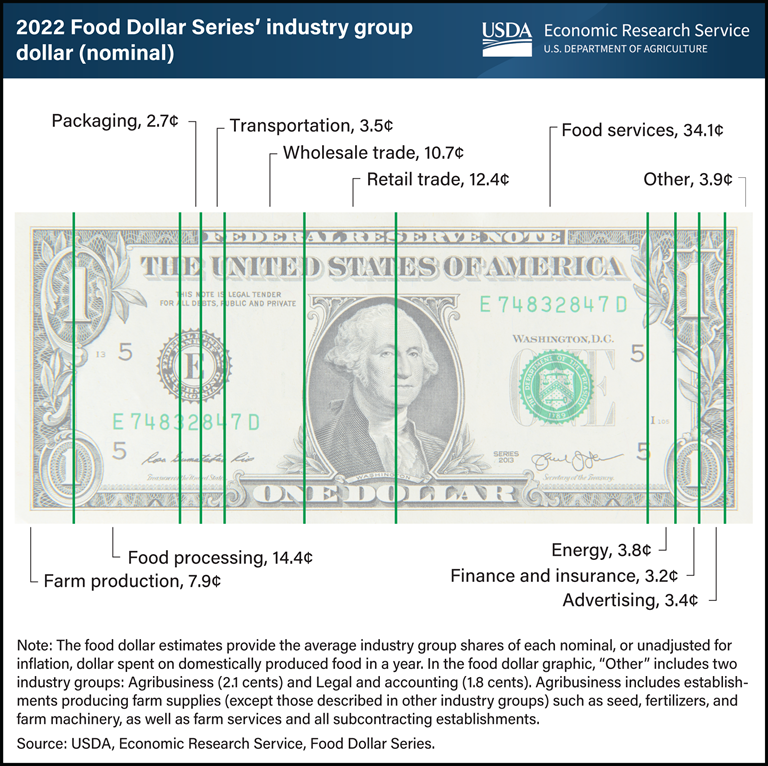 |
|
Prosperous Instagram / disastrous Twitter
|
02
- 11/12/2023
|
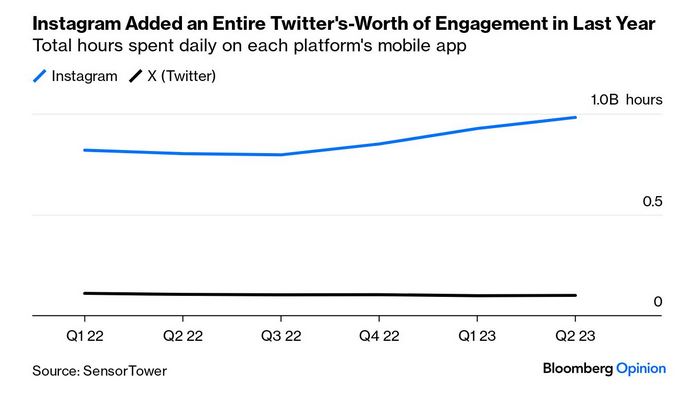 |
|
X in a difficult situation
|
03
- 11/12/2023
|
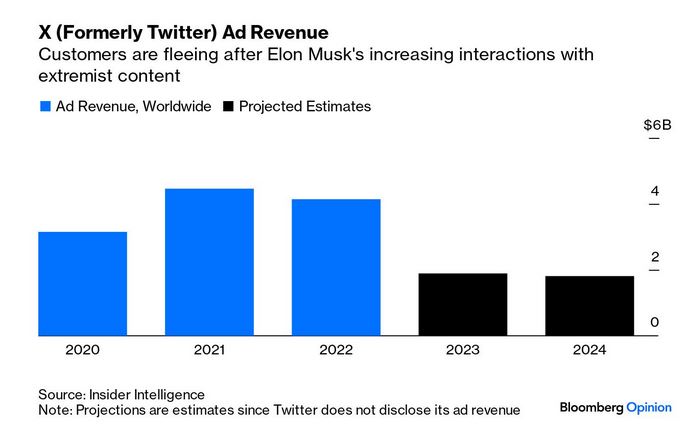 |
|
Mortality vs GDP per Capita
|
04
- 11/12/2023
|
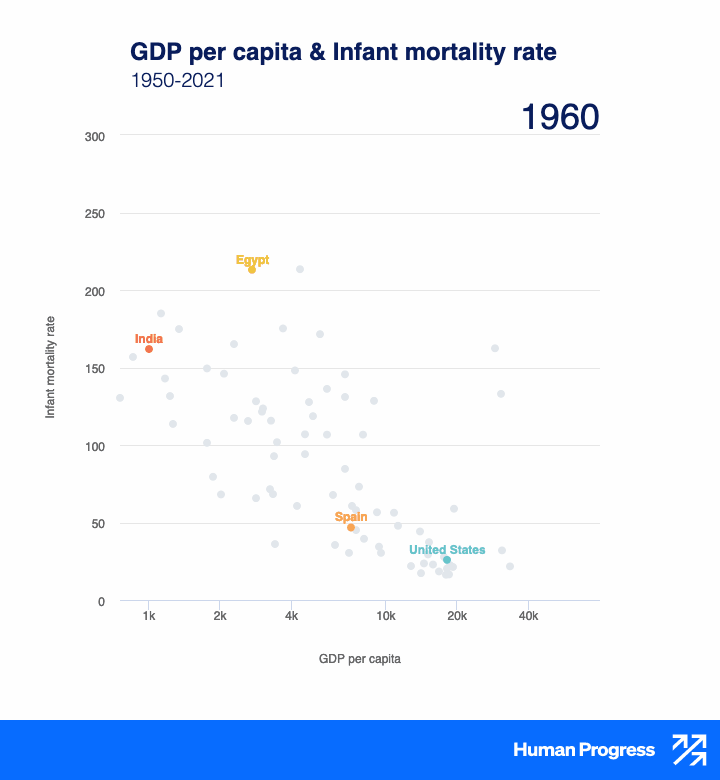 |
|
Less liberal democracies for the last years
|
05
- 11/12/2023
|
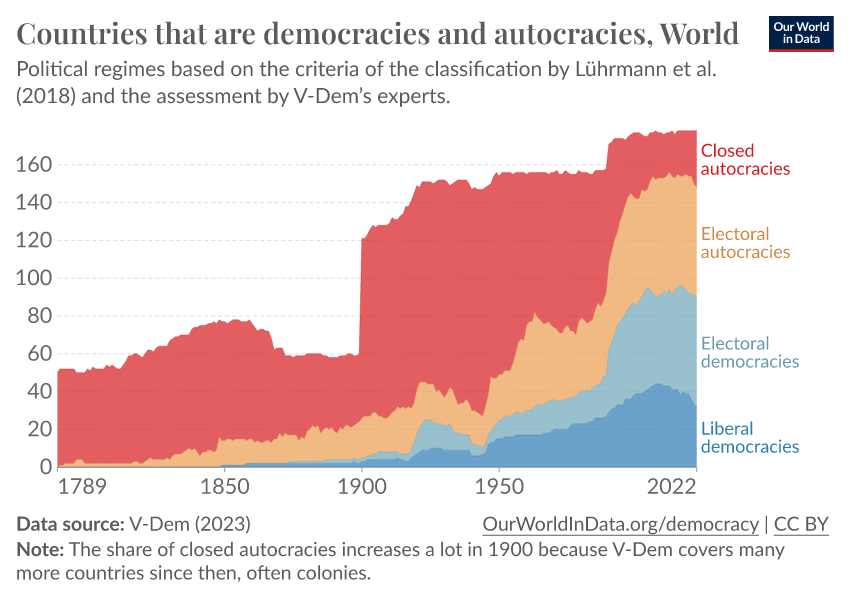 |
|
Yuan for an Economical Giant but Poorly used outside China
|
06
- 11/12/2023
|
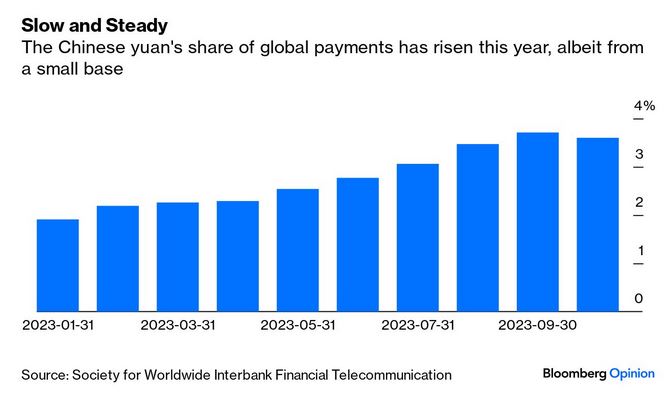 |
|
Half of Russian People earn less than 96% of French People
|
07
- 11/12/2023
|
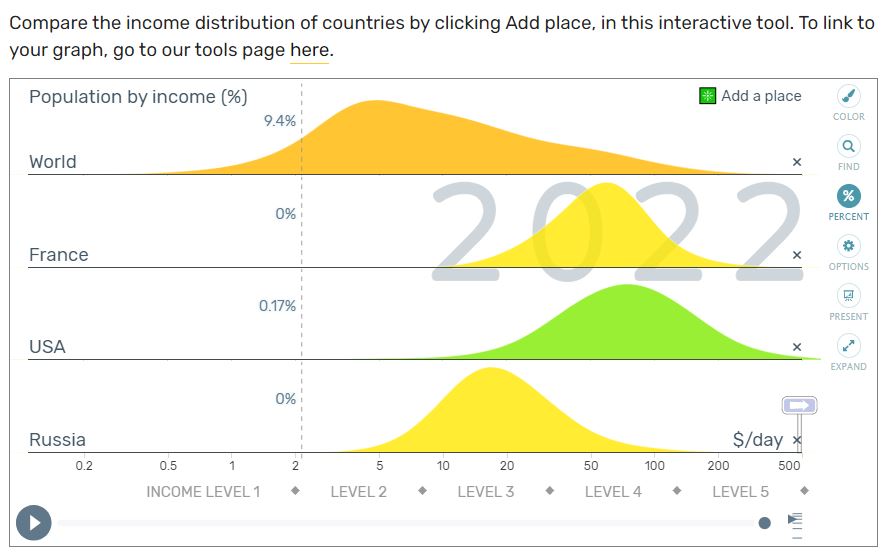 |
|
Extreme Poverty Down
|
08
- 11/12/2023
|
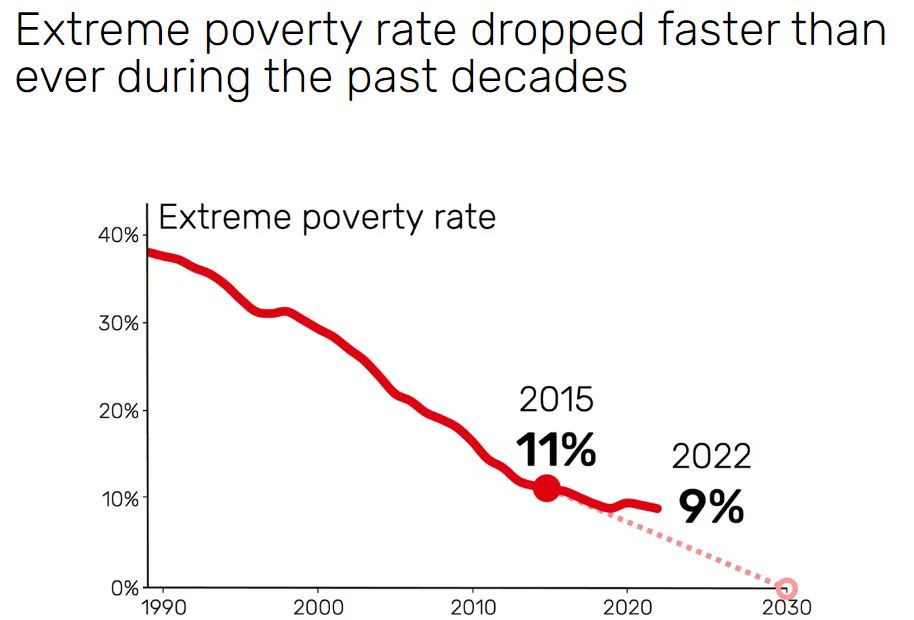 |
|
Outside China, Less Constructions of Coal Plants
|
09
- 11/12/2023
|
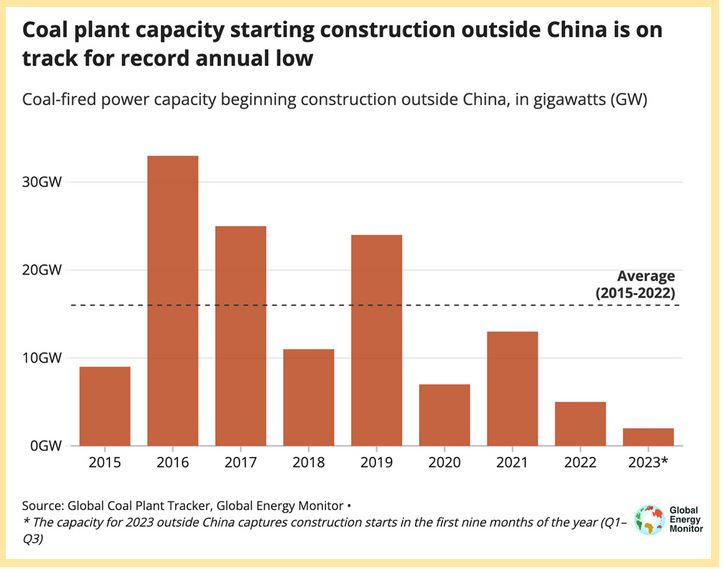 |
|
US Homeless People in Large US Eastern and Western Cities
|
10
- 11/12/2023
|
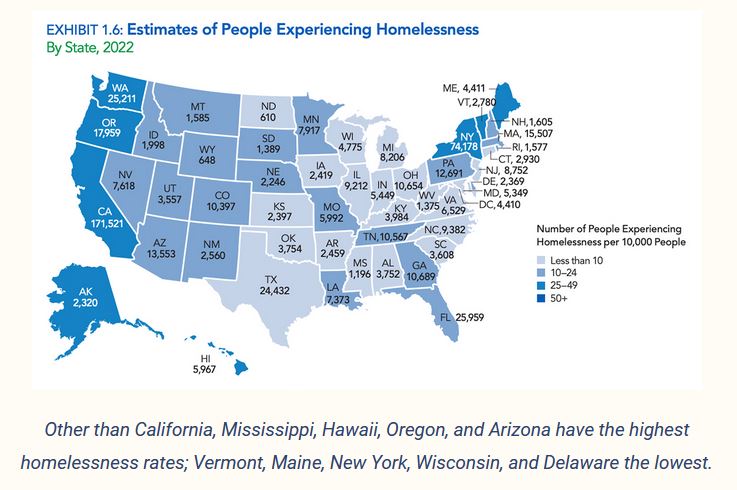 |
|
Beds in Shelters and Permanent Housing for US Homeless People
|
11
- 11/12/2023
|
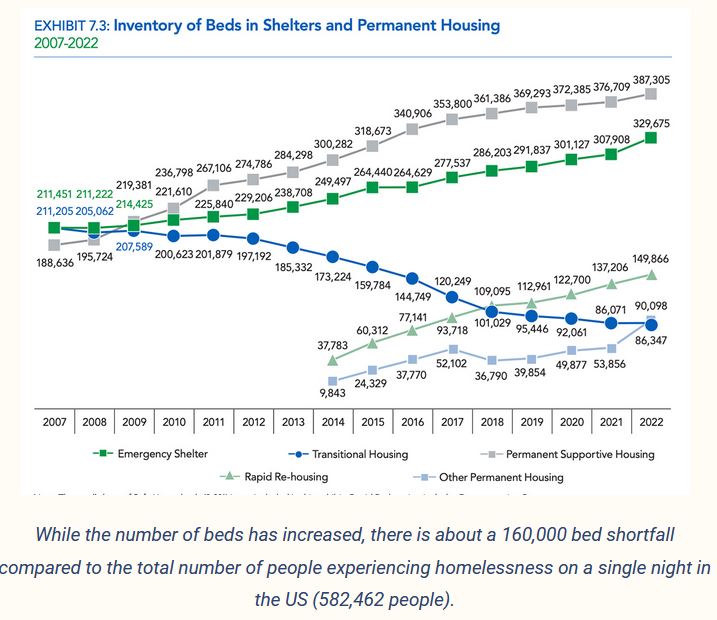 |
|
US Homeless people
|
12
- 11/12/2023
|
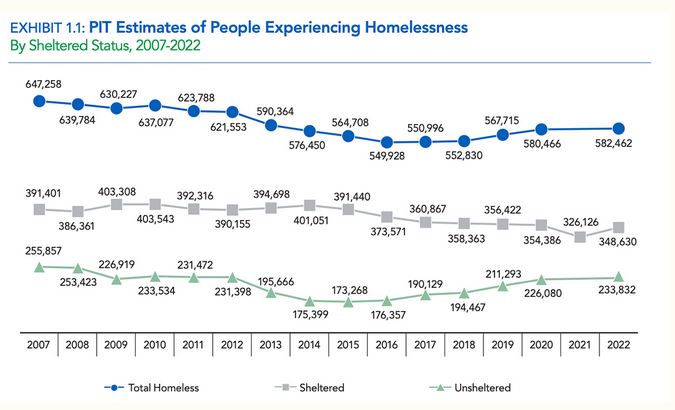 |
|
45000 years ago, a Sulawesi Island dwarf buffalo painting (Indonesia)
|
11/12/2023
|
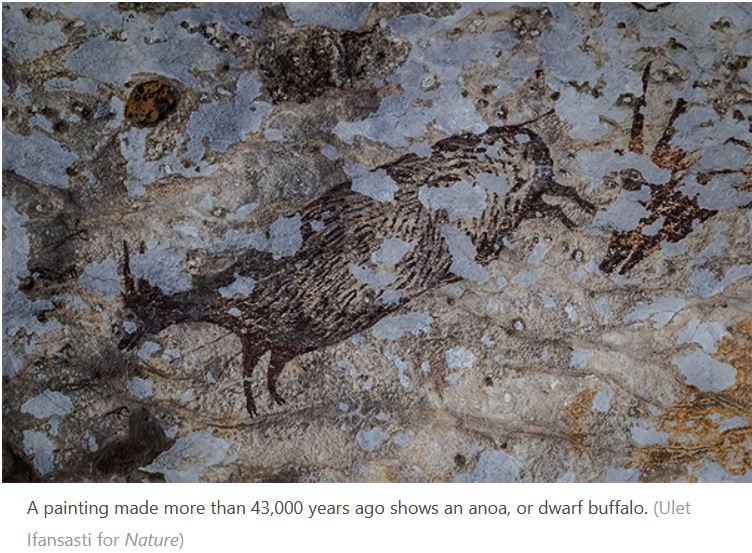 |
|
Not that Strong Financial System
|
13
- 11/12/2023
|
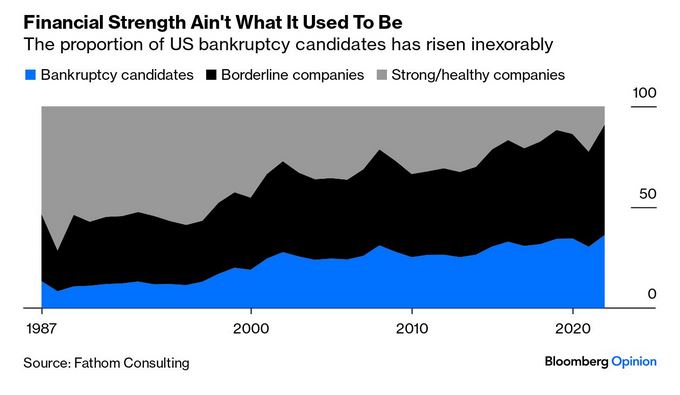 |
|
Panama bottleneck
|
14
- 11/12/2023
|
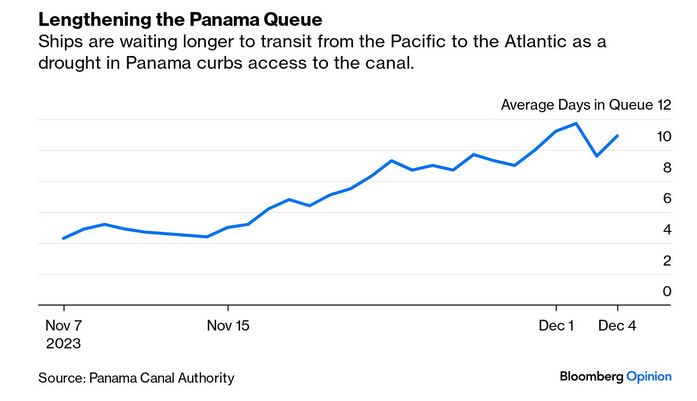 |
|
Rich Podcasters
|
15
- 11/12/2023
|
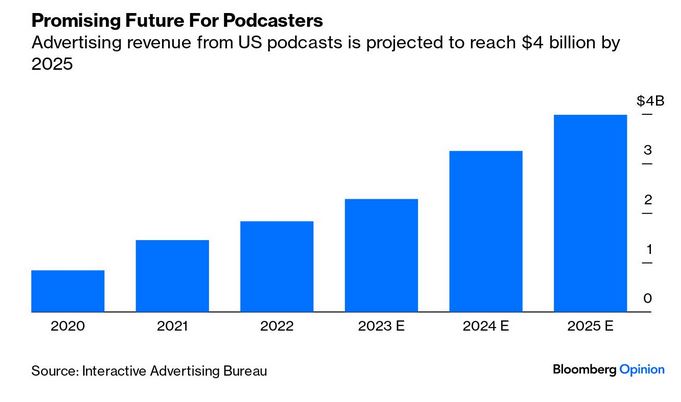 |
|
Rolex less fashionable
|
16
- 11/12/2023
|
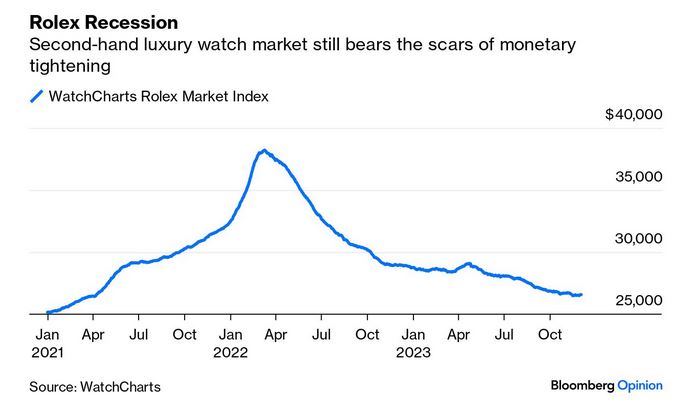 |
|
Monetary Stimulus favorable for cryptos
|
17
- 11/12/2023
|
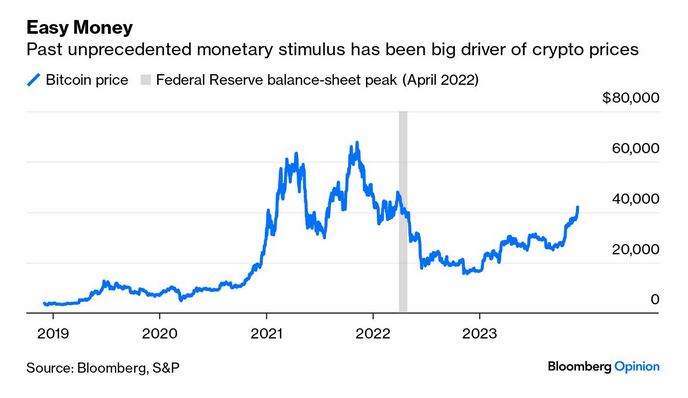 |
|
Covid Mortality Excess
|
18
- 11/12/2023
|
![]() |
|
No more interest in Sciences
|
19
- 11/12/2023
|
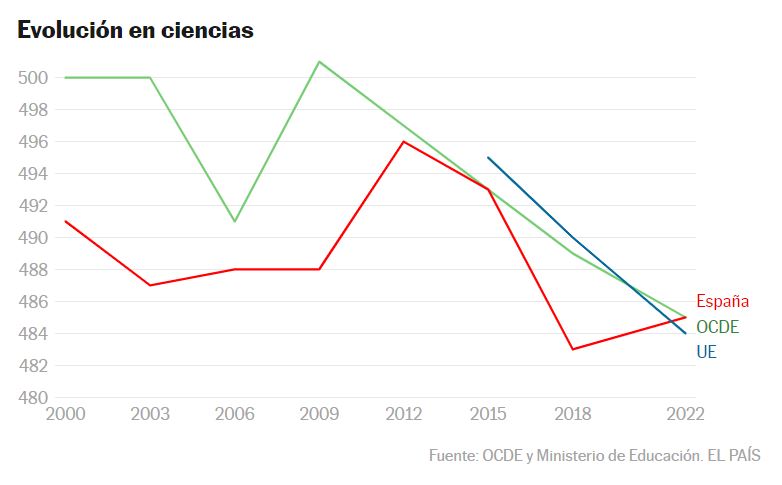 |
|
More screens, less books
|
20
- 11/12/2023
|
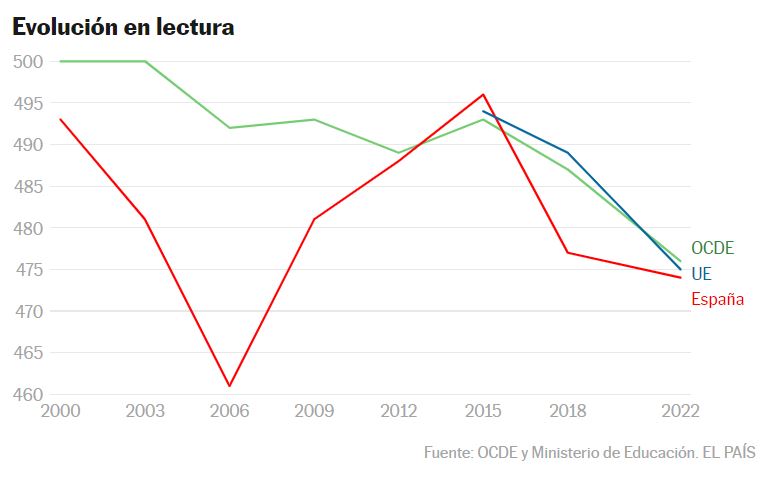 |
|
Poor mathematics
|
21
- 11/12/2023
|
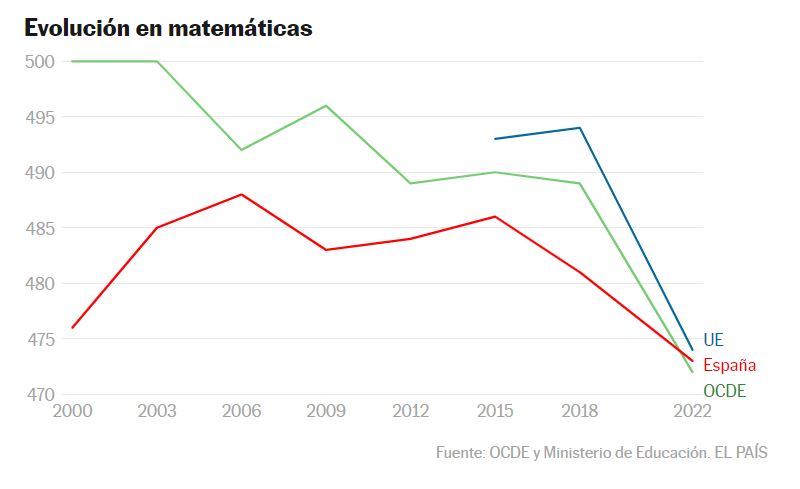 |
|
Revenues were falling in 2022 in many countries
|
22
- 11/12/2023
|
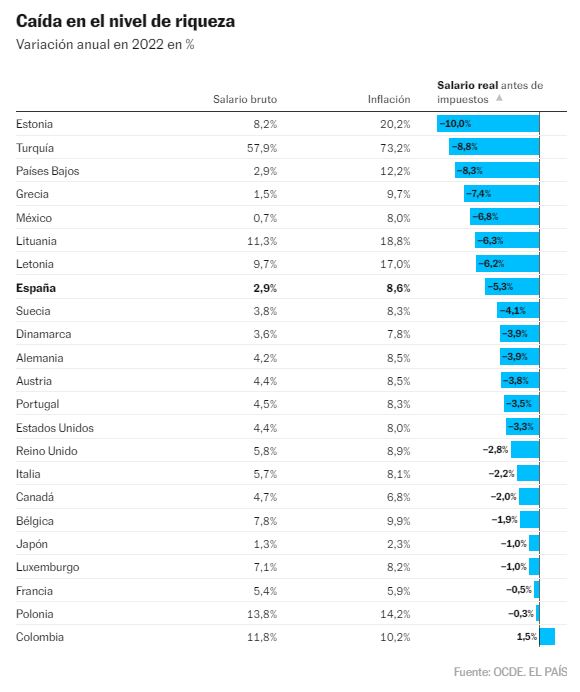 |
|
Unemployment falling in many European countries
|
23
- 11/12/2023
|
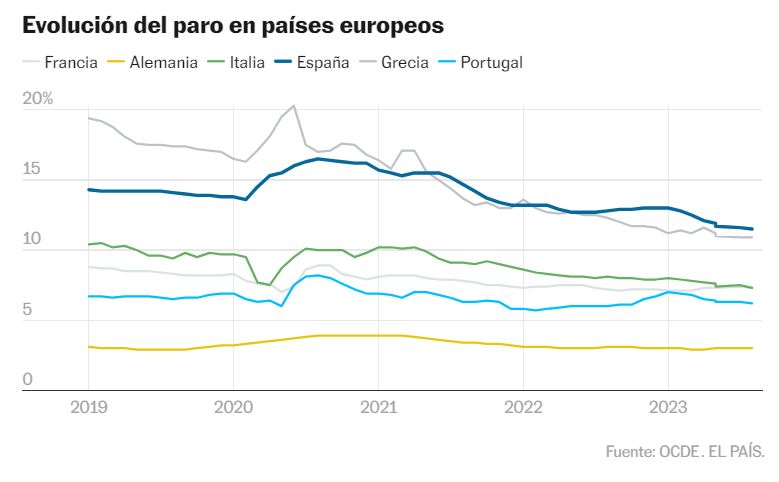 |
|
No climate change e.g. in Texas?
|
24
- 11/12/2023
|
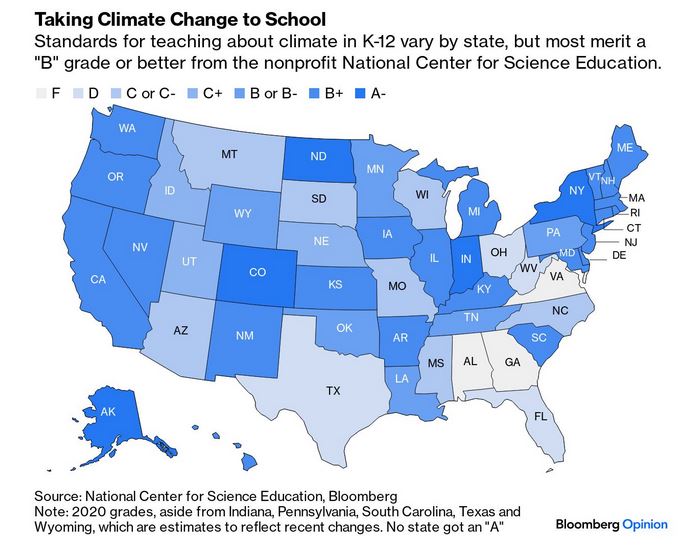 |
|
Numbers of Billion-Dollar Climate Disasters in USA
|
25
- 11/12/2023
|
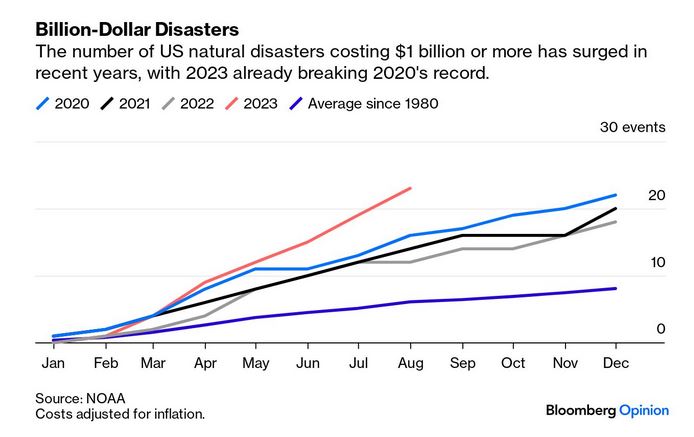 |
|
Investing to avoid Climate Change Effects
|
26
- 11/12/2023
|
 |
|
Hot USA
|
27
- 11/12/2023
|
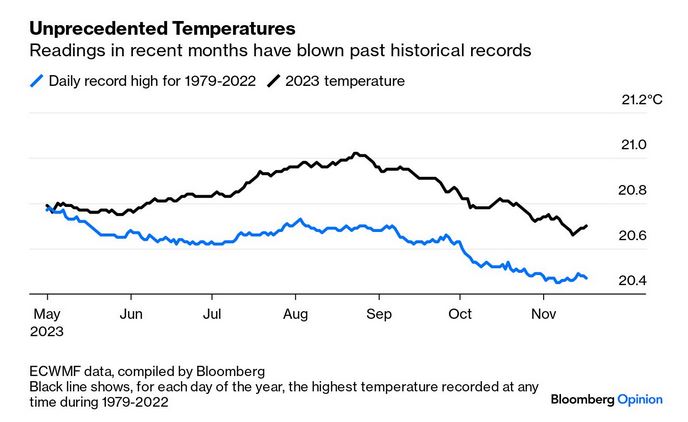 |
|
Economic Freedom and Economic Prosperity
|
28
- 11/12/2023
|
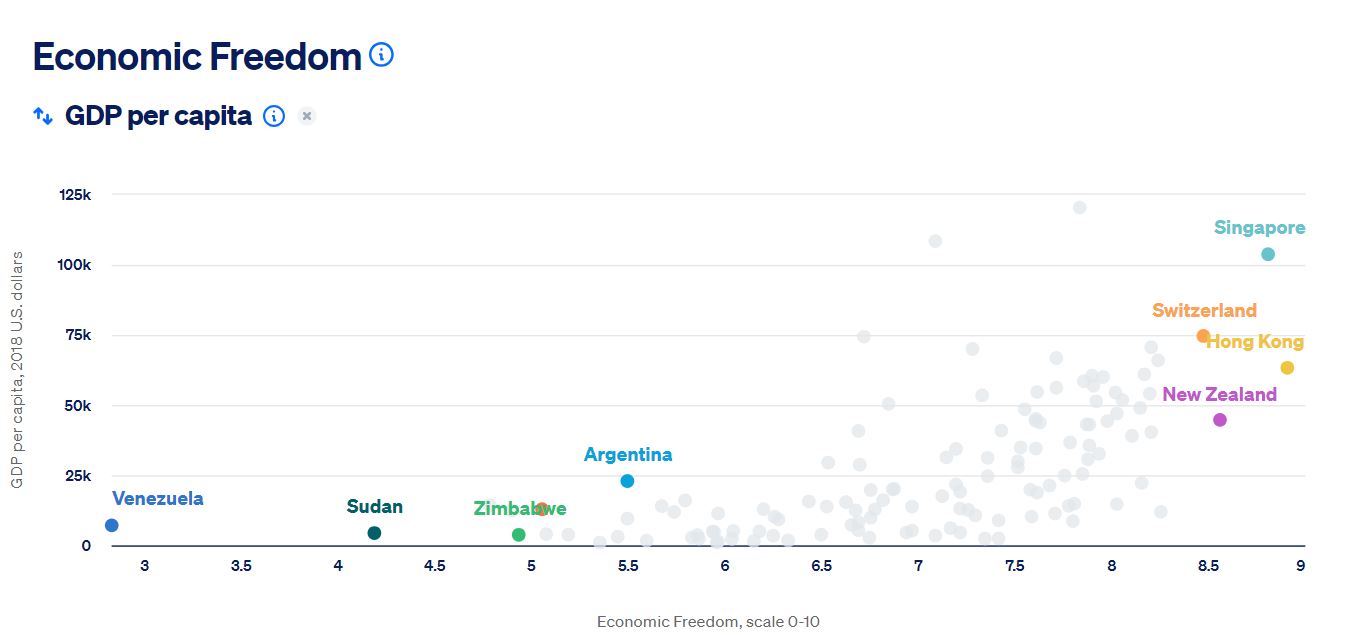 |
|
The edition of this efita newsletter is sponsored by Acta Digital
Services and its distribution by vitisphere.com
Please, contribute to the content of your efita newsletter, and advertise
your events, new publications, new products and new project in this
newsletter. Without your support, it will not survive!
Contact: Guy WAKSMAN
E-mail: guy.waksman(a)laposte.net
To read this newsletter on our web site
See Efita
The archives of this newsletter
See Efita
About the EFITA mailing list
You can use the efita moderated list (> 15000 subscribers) to announce
any event / product / web site / joke (!) related to IT in agriculture,
environment, food industry and rural areas.
If you want to subscribe a friend, please fill in his
form.
If you do not wish to receive our messages, please fill in the following
form...
|













